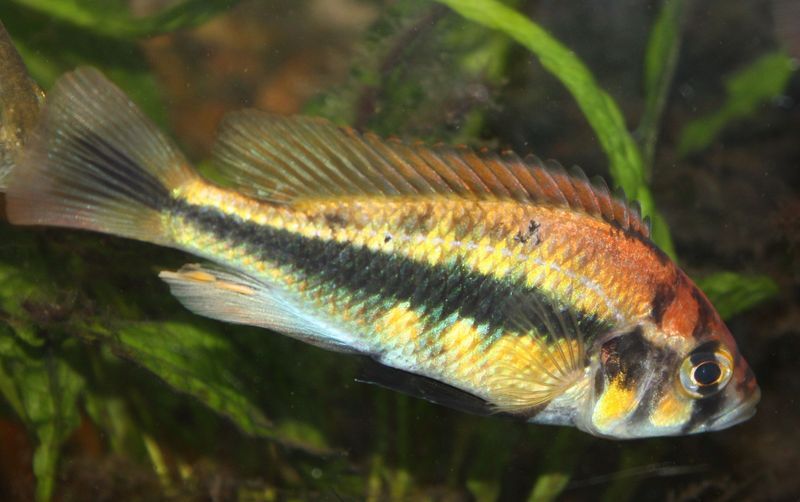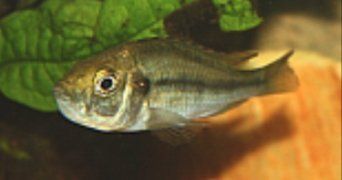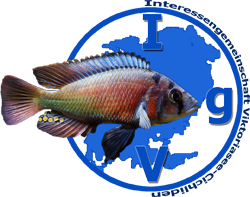Enterochromis cf. paropius
Enterochromis cf. paropius

Astatoreochromis alluaudi
Untertitel hier einfügenButton
Bildtitel
Untertitel hier einfügenButton
Haplochromis cf. paropius lives outside of the coastal area in 15 m deep open water over mud soil

male

female
coloring
Male: The basic color of the body is yellow-orange, with the forehead is reddish brown to red colored. Below the broad black sideline, which extends from the gills into the tail, the yellow-orange is partly transformed into a brass green. The anal fin is light blue at its base and turns reddish, the dorsal fin is red in the front area, bluish iridescent in the rear area.
Female:
Her body is silver to light ocher with a black longitudinal bandage from the gill cover to the tail root. In the upper half of the body, a broken black band runs from the first dorsal fin ray to the last one. Depending on the mood also dark transverse bands are visible, which distribute themselves at intervals from the gills to the tail.
Aquarium / Facility
For a group Haplochromis cf. paropius an aquarium with 120 x 40 cm footprint is sufficient. The device is described in the chapter "Attitude" under "rock-dwelling insectivores".
size
earlier about 11 cm, after changing the eating habits about 9 cm
nutrition
Haplochromis cf. paropius is a rather unspecialized insectivore. It feeds mainly on insects and their larvae. In captivity, he takes every common fish food: flake food, black and white mosquito larvae, Mysis, Artemia, cichlid sticks, herbal substances and shellfish.
social behavior
Haplochromis cf. paropius shows a moderate intra-articular aggression. It is more compatible with other species. The males can become very aggressive in old age.
breed
Maternal mouthbrooder. But there are also observations, according to which the male has also participated in the breeding business. Breeding time until the boys are released: 18 days.
miscellaneous
At present, doubts arise as to whether the animals caught in different places are actually only one species. The species is not endangered in the wild.
© 2017, Interessengemeinschaft Viktoriasee-Cichliden, Toni Wagner. All rights reserved.



